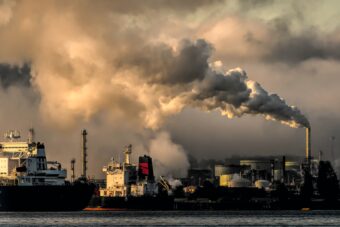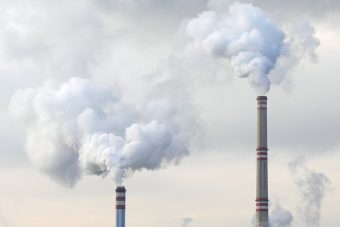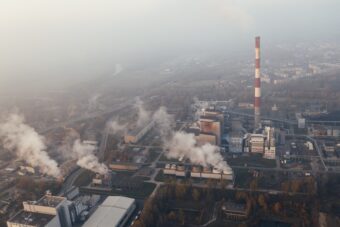
Chris LeBoutillier)
The impressive growth in clean energy investments in recent years has been led by renewable power. Annual spending on solar PV and wind projects has risen by more than USD 300 billion in the last five years, and now accounts for one-third of the total USD 1.8 trillion that we expect to go to clean energy investments in 2023. Deployment has been driven by a virtuous circle of policy support and cost reductions. The global energy crisis, coupled with acute concern over emissions and competition among countries for positions in the clean energy economy, has redoubled policy momentum in recent years.
Through the 2010s, renewable investors and governments designing policies became used to two supportive trends: relatively cheap capital in an era of low interest rates, and steadily falling costs. However, this context changed as the world emerged from the Covid-19 pandemic into the global energy crisis.
An environment of higher interest rates (outside China) means financing becomes more expensive, with multiple effects for renewables. Projects become harder to finance; companies’ profitability is affected as they need to increase their reliance on more expensive equity; and very leveraged companies have a higher risk of default. Clean energy investments are more vulnerable to a rise in borrowing costs than other types of energy investments, as they typically involve relatively high upfront costs that are compensated over time by much lower operating expenses.
High borrowing costs exacerbate challenges facing renewable project developers in many emerging and developing economies, where the cost of capital is already two or three times higher than in advanced economies and China. According to the latest survey data from the IEA’s Cost of Capital Observatory, nine out of ten respondents expect increases in the cost of capital in emerging and developing economies in 2023.
MORE:
- IRENA GLOBAL ATLAS UPGRADE ENHANCES UNDERSTANDING OF COUNTRIES’ RENEWABLES POTENTIAL
- RENEWABLES JOBS NEARLY DOUBLED IN PAST DECADE, SOARED TO 13.7 MILLION IN 2022
- IEA, ECB AND EIB HIGHLIGHT IMPORTANCE OF AN ACCELERATED CLEAN ENERGY TRANSITION FOR EUROPE’S INDUSTRIAL COMPETITIVENESS AND FINANCIAL STABILITY

In addition, the extended run of cost declines for key clean energy technologies has been interrupted by volatile commodity prices and supply chain constraints. The IEA’s Clean Energy Equipment Price Index tracks prices for a basket of solar PV modules, wind turbines and lithium-ion batteries. There was a noticeable uptick in prices that started towards the end of 2020 and which remains visible for many clean technologies with the exception of solar PV.
The renewable power industry as a whole has demonstrated considerable resilience over the last few years. But the change in broader market conditions has brought signs of strain, especially in the wind sector.
Project commitments and economics have been upset by higher financing costs and higher input costs for key raw materials, including critical minerals, meaning that these projects have become difficult or impossible to deliver as planned. This has led wind developers to request price negotiations to accommodate higher costs, and in some cases to project delays and cancellations. It has also sapped willingness to bid in new auctions where the price expectations are not aligned with today’s costs. As reported in the latest Renewable Energy Market Update, auctions have been left undersubscribed as a result, especially in Europe. In 2022, unallocated capacity globally reached its highest-ever level with only around 85 percent of capacity awarded – compared with 90-95 percent in 2020 and 2021. Europe accounted for 14 out of the total 20 GW auctioned capacities that were left unallocated globally. This trend continued in 2023; a striking example came in the UK when an offshore wind auction was left with no bids.
This uncertainty is having cascading implications for supply chains, with wind manufacturing facilities operating at well under full capacity. Many manufacturers of wind turbines in the sector in Europe and the United States have posted negative net margins for seven consecutive quarters over the last two years.
The offshore wind sector has been particularly affected, with 12 GW of offshore wind capacity facing delays or cancellation in the UK and US alone. As a result, Ørsted wrote off USD 4 billion against US offshore wind projects. BP and Equinor also wrote off USD 800 million, and Iberdrola cancelled an 800 MW project in the US due to financial complications.
The solar PV industry has also been exposed to cost and financing pressures, but from a slightly different direction. Higher borrowing costs have been a concern for developers, but the main issue has been the emergence of a large excess in manufacturing capacity that is reducing the profitability of players throughout solar PV supply chains. As described in detail in the Special Report on Solar PV Global Supply Chains, the solar industry is dominated by large integrated Chinese companies and manufacturing capacity in China and elsewhere has been running ahead of deployment.

(Marcin Jozwiak)
The resulting fierce competition for market share has reduced the profits of vertically integrated manufacturers while non-integrated firms are struggling to attain profitability altogether. Smaller manufacturers are faced with extremely challenging conditions, as prices for solar PV modules reached record lows despite rising levels of demand.
Some of the challenges facing the wind and solar industries are primarily cyclical or temporary in nature. Cost pressures along supply chains are starting to ease: prices for key clean energy technologies have either levelled off or resumed their downward trajectory. Some issues facing projects have been attributable to delays in policy implementation, for example with aspects of the EU Green Deal or in finalising detailed tax credit guidance in the case of the US Inflation Reduction Act.
But the recent difficulties facing renewable projects also highlight some broader structural issues that policymakers need to address. Four issues stand out:
- Inflexible tender designs: the trend in recent years in tenders was that renewables were able to offer increasingly lower prices in a low cost, low interest rate environment. This set expectations among governments that auction prices would only ever head downwards. Procurement and contracting terms were not flexible enough to accommodate changing macroeconomic conditions or cost pressures.
- Long waiting times for permitting and connection: financial pressures have been compounded by long lead times required to connect to the grids and gain necessary permits. As the recent IEA report on Electricity Grids and Secure Energy Transitions makes clear, at least 3 000 GW of renewable power projects, of which 1 500 GW are in advanced stages, are awaiting grid connection. This is to equivalent to five times the solar PV and wind capacity added in 2022. In some countries, early-stage project contracts are awarded prior to securing permits and connection, which complicates final generation cost estimates for power producers.
Source: IEA



